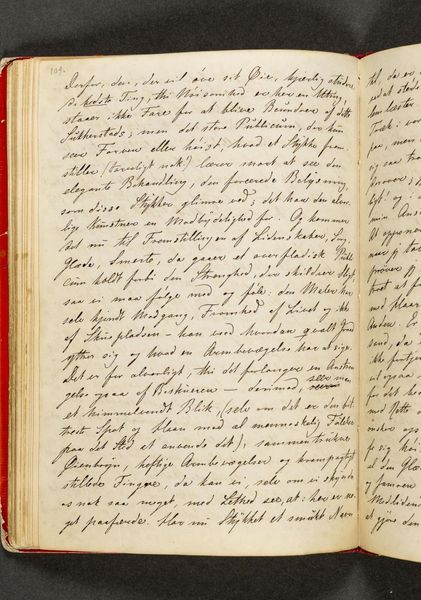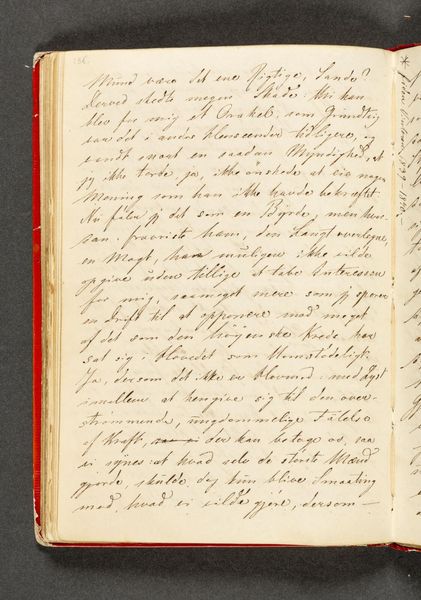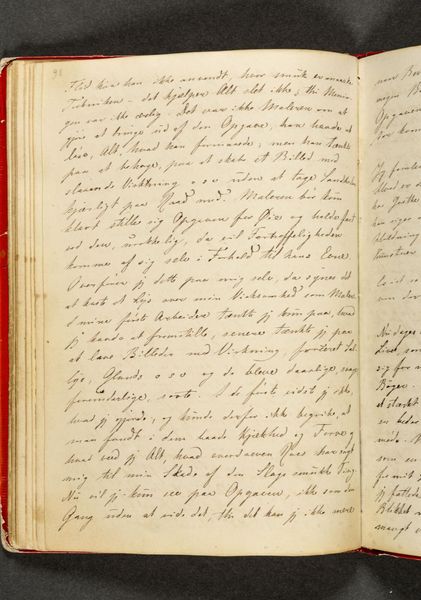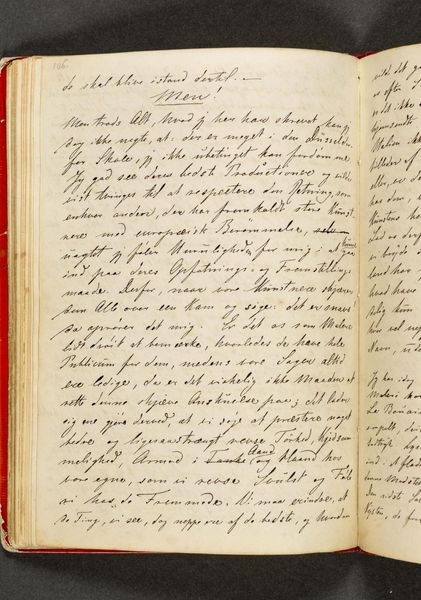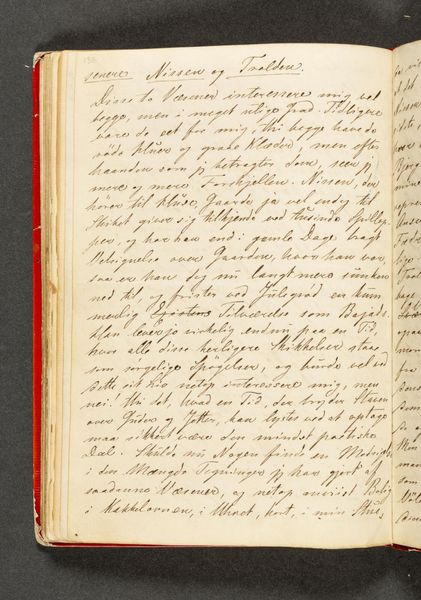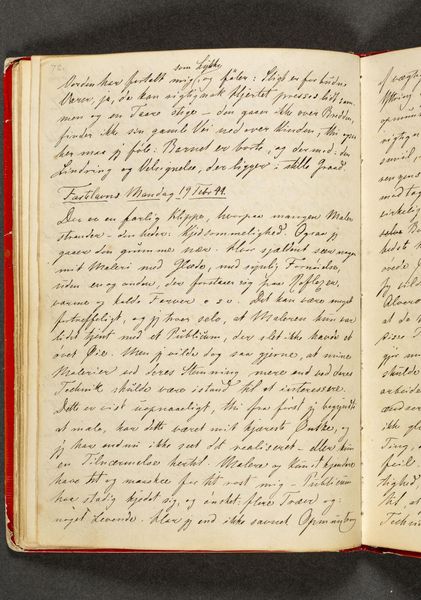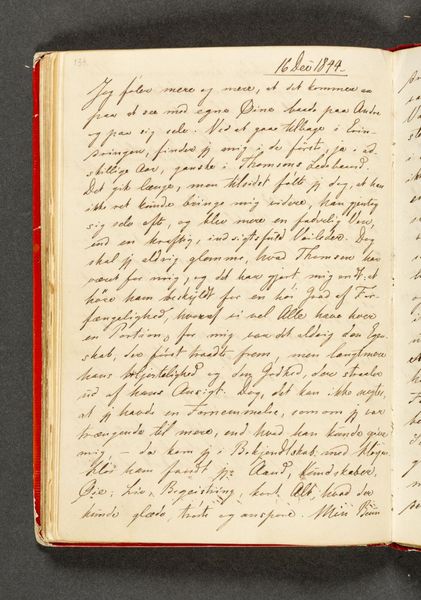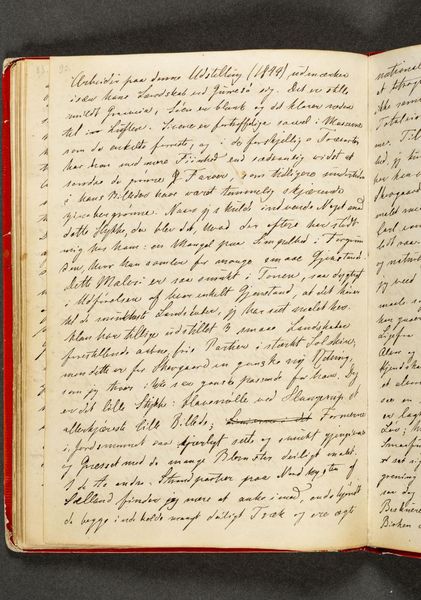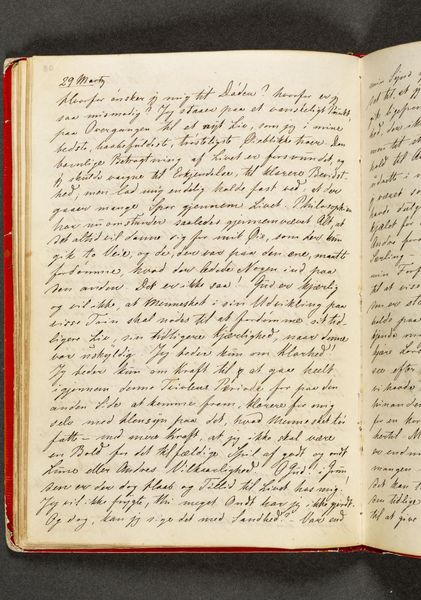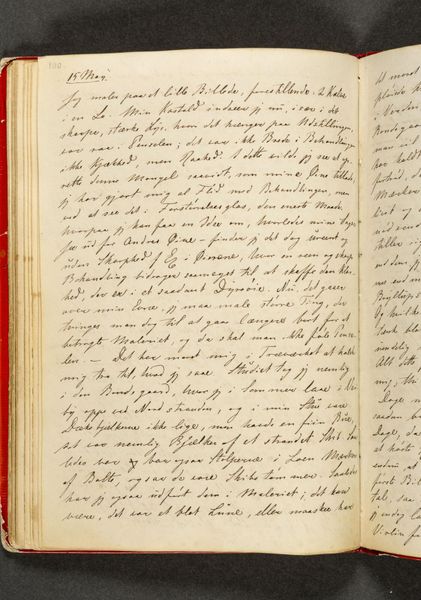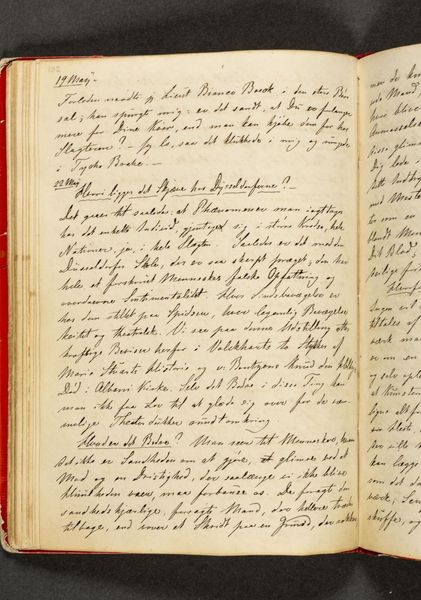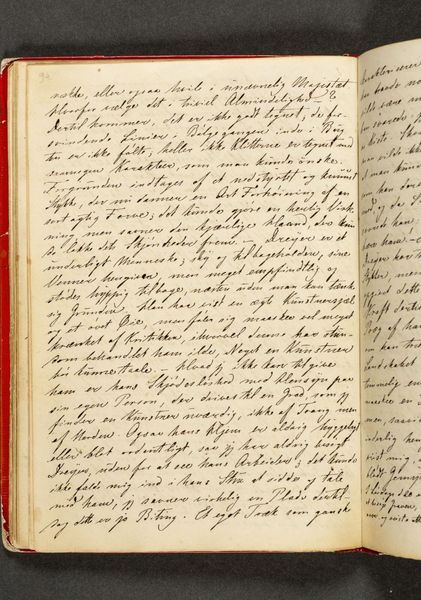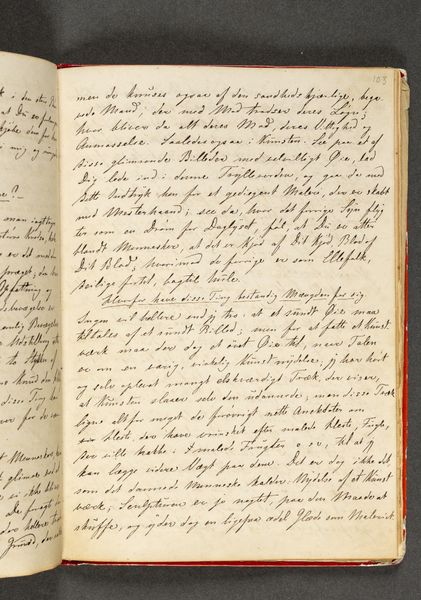
drawing, paper, ink
#
drawing
#
paper
#
ink
Dimensions: 192 mm (height) x 133 mm (width) (bladmaal)
Editor: So this is a page, specifically page 114, from Johan Thomas Lundbye’s diary, dating back to 1844. It’s rendered in ink on paper. There's something quite intimate about it, like looking over his shoulder. What do you see in this piece? Curator: I see the confluence of material constraints and personal expression. Consider the means of production: paper, ink, the hand guiding the pen. This wasn't a printed text; it's laboriously handwritten. It points to the value Lundbye placed on documenting his thoughts, choosing a medium readily available yet demanding of time. What does that choice tell us about his commitment to the writing, to this tangible form of journaling, knowing it would be a singular product of his efforts? Editor: That's an interesting way to think about it. It’s easy to overlook the physical act of writing in the face of the words themselves. Curator: Exactly. The material informs the meaning. Also, consider who might have had access to such materials at this time? What level of literacy was required to even engage in diary keeping like this? It places Lundbye within a specific social and economic context. It also makes one think about the labor necessary to produce the ink and the paper - what can we extract from this art beyond aesthetics? Editor: I hadn’t thought about that—it does give a clearer picture of the social context and effort behind something that seems so personal. Curator: Indeed. Materiality isn't just about the "what," but also the "how," "why," and "for whom." The finished product here becomes less a window into Lundbye's soul and more an artifact that encapsulates broader social dynamics. What are your thoughts now? Editor: Now, I see the diary not just as a record of Lundbye's thoughts, but also a product of his time. Thanks for sharing your perspective. Curator: My pleasure. Thinking materially helps ground our interpretations in the realities of production and consumption.
Comments
No comments
Be the first to comment and join the conversation on the ultimate creative platform.
